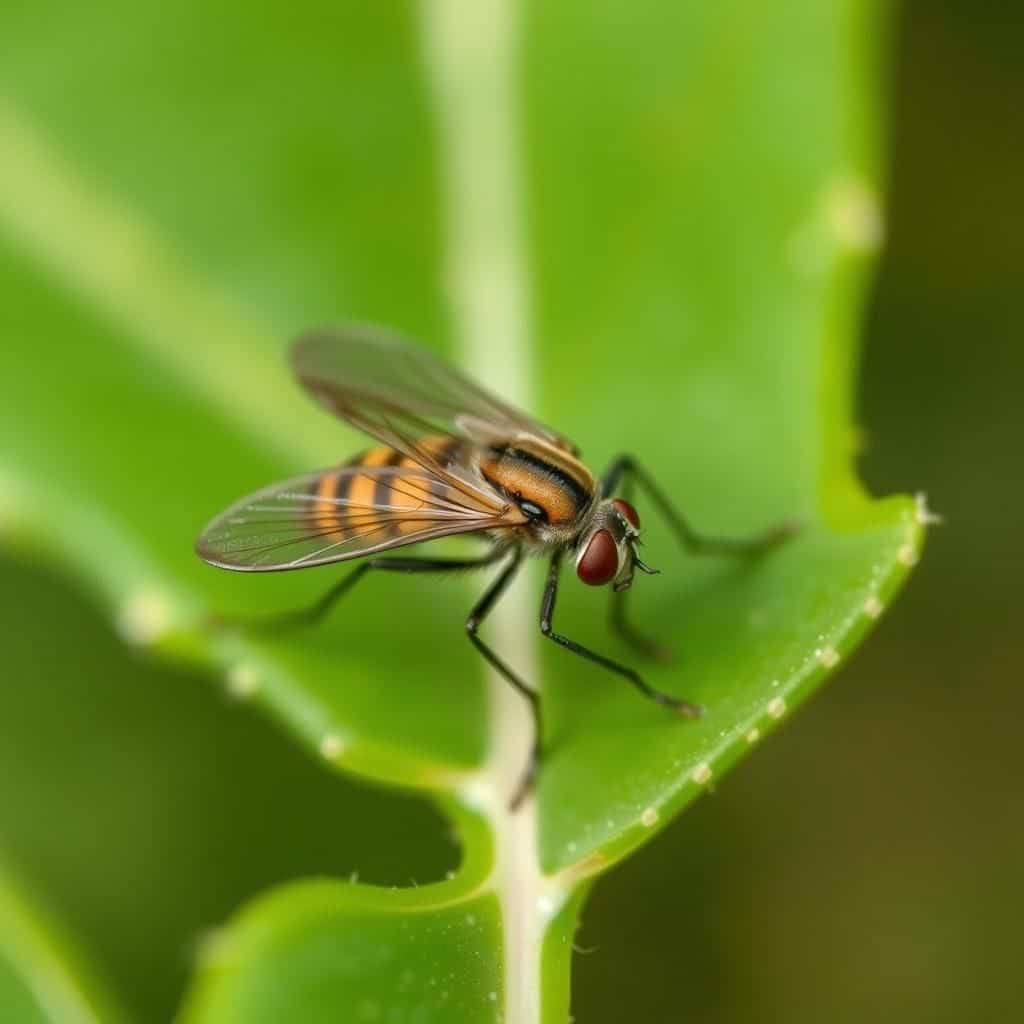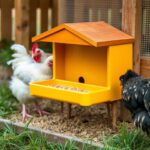How to Identify and Eliminate Very Small Flying Bugs in House: A Comprehensive Guide

Identifying and eliminating very small flying bugs in your home can be a challenging task, especially when their presence disrupts your comfort. These tiny pests often go unnoticed until they've multiplied, making it crucial to address the issue promptly. This comprehensive guide will help you recognize various types of small flying insects commonly found indoors, understand their behavior, and implement effective strategies for eradication. From fruit flies to gnats, we will explore practical tips and preventive measures to ensure your living environment remains pest-free. Prepare to reclaim your space and keep these unwelcome visitors at bay once and for all.
Understanding Very Small Flying Bugs in Your House
Very small flying bugs, often referred to as flying insects, can invade our living spaces and create an unsettling atmosphere. These pests, which may include organisms like fruit flies, gnats, and moths, typically thrive in environments where food sources or moisture are readily available. Understanding their behavior, habitat, and methods of control is essential for maintaining a comfortable home. Their presence can signal underlying issues such as poor sanitation or neglected areas, making it vital for homeowners to address these pests promptly and effectively.
Common Types of Very Small Flying Bugs
Some of the most common types of very small flying bugs found in homes include fruit flies, fungus gnats, and drain flies. Fruit flies are attracted to overripe or spoiled fruits and vegetables, while fungus gnats are often found near indoor plants where moisture is high. Drain flies, on the other hand, breed in stagnant water in drains and can become a nuisance if not addressed. Identifying the type of insect is crucial when determining the appropriate control measures.
Identifying Their Breeding Grounds
Very small flying bugs typically reproduce in areas with ample moisture and food sources. For instance, fruit flies breed in decaying organic matter, particularly fruits and vegetables. Fungus gnats are drawn to damp potting soil, making houseplants their ideal breeding ground. Similarly, drain flies thrive in the organic sludge of sink or bathtub drains. By understanding their breeding preferences, homeowners can pinpoint and eliminate these breeding grounds to significantly reduce their populations.
Effective Control Methods
To control very small flying bugs effectively, it’s important to implement a combination of cleaning, trapping, and preventive measures. Regularly cleaning surfaces, removing overripe produce, and ensuring that all food is properly sealed can significantly deter these insects. Traps, such as apple cider vinegar solutions for fruit flies or sticky traps for gnats, can be effective at capturing adults. Additionally, sealing cracks and moisture sources can prevent their entry and nesting.
Natural Remedies for Repelling Flying Bugs
There are several natural remedies that can help repel very small flying bugs in the home. For example, essential oils such as peppermint, lavender, and tea tree oil can be mixed with water and sprayed around areas where these insects are common. Other options include placing vinegar traps or using herbs like basil and rosemary to deter them. These methods are often more eco-friendly alternatives to chemical insecticides.
When to Call for Professional Help
If the infestation of very small flying bugs becomes overwhelming or persistent despite DIY efforts, it may be time to consider hiring a pest control professional. Experts can provide a more thorough inspection to identify the source of the infestation and apply specialized treatments that are safe and more effective. This is particularly important when dealing with insects that can reproduce rapidly, as a swift and effective response is crucial to preventing a larger problem.
| Bug Type | Breeding Grounds | Attraction Source |
|---|---|---|
| Fruit Flies | Decaying fruits and vegetables | Overripe produce |
| Fungus Gnats | Damp potting soil | Indoor plants |
| Drain Flies | Stagnant drain water | Organic sludge in drains |
Why do I have tiny little flying bugs in my house?

Tiny little flying bugs in your house can be attributed to a variety of reasons, often related to your home’s environment and specific conditions that attract these pests. Commonly, several types of insects fit this description, including gnats, fruit flies, and dust mites. Understanding the root causes can help you manage and eliminate these unwanted visitors.
1. Common Types of Tiny Flying Bugs
The first step to addressing the issue is identifying the type of bug you're dealing with. Some of the most common tiny flying bugs include:
- Fruit flies: Often come from overripe fruits or vegetables.
- Fungus gnats: Typically found in houseplants or moist soil.
- Drain flies: Originating from organic matter in sinks and drains.
Each type of bug has specific environmental triggers that encourage their presence in your home.
2. Identifying Environmental Triggers
Tiny flying bugs are often attracted to specific conditions in your home. These conditions may include:
- Moisture: Leaks or high humidity levels can provide a breeding ground.
- Food Sources: Uncovered food items or waste can attract bugs.
- Organic Matter: Decaying materials, like old plants or food scraps, invite pests.
Recognizing these triggers is crucial for effective pest management.
3. Seasonal Factors
The time of year can affect the presence of flying bugs in your house. They are often more prevalent during:
See also:
- Spring and Summer: Warmer temperatures encourage breeding.
- Wet Seasons: Increased moisture can lead to infestations.
- Harvest Times: Increased fruit availability attracts specific insects like fruit flies.
Being aware of seasonal trends can help you prepare for potential infestations.
4. Home Maintenance Tips
Preventing tiny flying bugs requires regular home maintenance. Effective strategies include:
- Seal Entry Points: Check for gaps in windows and doors.
- Clean Regularly: Ensure surfaces are free from food debris and spills.
- Check Plants: Inspect indoor plants for pests and adjust watering as needed.
By following these maintenance tips, you can decrease the likelihood of attracting these bugs.
5. When to Seek Professional Help
If your efforts to eliminate the flying bugs are unsuccessful, it might be time to consider professional help. Signs that you should call an expert include:
- Persistent Infestation: If the bugs return quickly despite your efforts.
- Worsening Conditions: Increased humidity or signs of mold alongside bug presence.
- Identifying Dangerous Species: Some bugs can cause harm or transmit diseases.
A professional can provide a thorough inspection and targeted treatments to resolve the problem effectively.
What are the tiny bugs in my house with no wings?

There are several types of tiny bugs that can inhabit your home, and many of them are known for being wingless. Here’s a detailed exploration of some common culprits.
Identifying Common Wingless Bugs
Tiny bugs in your house can generally be identified by their appearance and habitat. Some of the most common types include:
- Ants - Certain species of ants are small and do not have wings, especially worker ants that are always on the move in search of food.
- Bed Bugs - These small, flat insects are known for infesting bedding and furniture, and they do not possess wings.
- Fleas - Although they can jump long distances, fleas are wingless and can easily find their way into homes through pets.
Causes of Infestation
Understanding why these tiny bugs have chosen your home can help in addressing the problem effectively. Common causes include:
- Food Sources - Tiny insects are often drawn to food crumbs, spills, and trash. Keeping your home clean can mitigate this.
- Moisture - Many bugs thrive in damp environments; fixing leaks and using dehumidifiers can help.
- Entry Points - Gaps in windows, doors, and the foundation of your house can allow bugs to enter easily.
Common Treatment Options
If you find tiny wingless bugs in your home, there are several treatment options you can consider:
- Natural Remedies - Solutions like diatomaceous earth or essential oils (e.g., peppermint, tea tree) may deter bugs.
- Insecticides - Commercial products designed for specific bugs can be effective; however, read labels to ensure safety around pets and children.
- Professional Pest Control - If infestations persist, hiring a professional pest control service can provide targeted treatments.
Preventative Measures
Taking preventative steps can help keep your home bug-free. Consider these strategies:
- Regular Cleaning - Keep surfaces clean and free of crumbs and spills that attract pests.
- Seal Cracks - Use caulk or weather stripping to seal any gaps around windows and doors.
- Declutter - Reducing clutter around your home makes it harder for bugs to find hiding spots.
Signs of Infestation
Recognizing the signs of an infestation early can make management easier. Look for:
- Visible Bugs - Spotting the bugs themselves is the most direct evidence of an infestation.
- Droppings - Many insects leave droppings; tiny black specks may indicate the presence of pests like bed bugs.
- Damage - Chewed materials or damaged plants can signal a bug problem that needs addressing.
Should I be worried about gnats in my house?

Gnats are small flying insects that can often become a nuisance in households. Although they are typically harmless, understanding their presence and potential impact is essential to address any concerns you may have.
See also:
What are Gnats?
Gnats are small, flying insects that belong to various families, primarily within the order Diptera. They are often confused with fruit flies and are known for their tendency to swarm in large numbers. The most common types of gnats found in homes include:
- Fungus Gnats - Known for breeding in moist soil and decaying organic matter, they are often found around houseplants.
- Fruit Flies - Similar in appearance, these gnats are attracted to overripe fruits and fermented items.
- More Gnats - Includes other species like drain flies which thrive in areas with stagnant water.
Are Gnats Harmful?
Gnats are generally not harmful to humans or pets. They do not bite or sting, which reduces concerns related to physical harm. However, there are some important factors to consider:
- Health Risks - Gnats can carry bacteria and fungi, but they are unlikely to transmit diseases to humans.
- Food Contamination - Gnats found in kitchens can be a sign of spoiled food, leading to potential food safety issues.
- Annoyance Factor - While not harmful, their presence can be bothersome, especially in large swarms.
Why are There Gnats in My House?
Gnats typically invade homes in search of food, moisture, or breeding sites. Understanding the reasons for their presence can help in managing their population. Common attractants include:
- Overripe Fruits - Leaving fruit exposed can attract fruit flies, a type of gnat.
- Moist Soil - Houseplants with overly moist or decaying soil can be breeding grounds for fungus gnats.
- Standing Water - Areas like sinks or slow drains can host gnats like drain flies.
How to Get Rid of Gnats?
Getting rid of gnats involves a combination of elimination and prevention strategies. Here are effective methods to reduce their population:
- Eliminate Breeding Sites - Remove overripe fruits and ensure houseplants are not overly watered.
- Use Traps - Vinegar traps (using apple cider vinegar) can effectively catch and kill gnats.
- Maintain Cleanliness - Regular cleaning of surfaces, disposal of garbage, and checking for leaks can deter gnats.
How to Prevent Future Infestations?
Preventing future gnat infestations requires vigilance and a few proactive steps. To keep gnats at bay, consider the following preventive measures:
- Regular Cleaning - Keep your kitchen and other areas free from food debris and waste.
- Monitor Indoor Plants - Ensure proper watering practices and avoid watering plants too frequently.
- Seal Entry Points - Inspect windows and doors for gaps to minimize entry opportunities for gnats.
What are the super small gnats?

Super small gnats, often referred to as fungus gnats or fruit flies, are tiny flying insects that are commonly found in moist environments. They are typically less than 1/8 inch in length and have long legs and thin bodies. These insects are more of an annoyance than a danger, but they can indicate overwatering in plants and are often attracted to decaying organic matter or standing water. Their life cycle includes several stages: egg, larva, pupa, and adult, with each stage contributing to their rapid population growth under favorable conditions.
Identification of Super Small Gnats
Identification of super small gnats can be achieved by looking at their distinctive features. They often possess the following characteristics:
- Size: Adult gnats are tiny, typically measuring around 1 to 3 mm.
- Color: Most gnats are dark brown or black, while some species may appear lighter or even yellow.
- Wings: They have clear wings that are elongated and often held flat over their bodies.
- Behavior: They fly in quick, erratic patterns, usually around damp areas or decaying materials.
Habitat and Distribution
Super small gnats thrive in specific environments that provide the moisture and organic material they need for survival. Key habitats include:
- Indoor Plants: Fungus gnats are often found in potting soil, especially if overwatering occurs.
- Decaying Organic Matter: They are attracted to compost piles, garbage, and other decomposing materials.
- Wet Areas: Areas with standing water, such as sinks and puddles, can be hotspots for these gnats.
- Gardens: Outdoor gardens, particularly those high in organic matter, can also attract gnats.
Life Cycle of Super Small Gnats
The life cycle of super small gnats is crucial in understanding their population management. It consists of four primary stages:
- Egg: Female gnats lay eggs in moist soil or decomposing materials.
- Larva: After a few days, the eggs hatch into larvae, which feed on organic material.
- Pupa: Larvae eventually enter the pupa stage, where they develop into adults.
- Adult: After emerging from the pupal stage, adults begin the cycle again, usually in just a few weeks.
Impact on Plants
While super small gnats are often seen as a nuisance, they can also have negative effects on plants. Certain impacts include:
- Plant Damage: The larvae can feed on plant roots, causing stress and reducing plant vigor.
- Soil Health: High populations of gnats can indicate poor soil management, such as overwatering.
- Spread of Diseases: They can potentially carry pathogens that affect plant health.
Control Methods for Super Small Gnats
Managing super small gnat populations can be achieved through several methods. Effective strategies include:
- Watering Practices: Allow soil to dry out between waterings to reduce habitat for larvae.
- Traps: Sticky traps can help capture adult gnats and monitor populations.
- Soil Management: Use well-draining soil and consider sterilizing potting mix before use.
- Biological Control: Introducing beneficial nematodes can help target gnat larvae in the soil.
Questions from Our Readers
What are very small flying bugs commonly found in houses?
Many very small flying bugs that invade homes include gnats, fruit flies, and moths. These pests often thrive in warm, humid environments and are attracted to food sources, moisture, and decomposing organic matter.
How can I get rid of very small flying bugs in my house?
To eliminate very small flying bugs, you can use a combination of cleaning, traps, and natural repellents. Ensure that food is stored properly, remove any breeding sites, and consider using apple cider vinegar traps to capture fruit flies and gnats effectively.
See also:
Are very small flying bugs harmful to humans or pets?
Generally, most very small flying bugs found in homes are not harmful; however, they can be a nuisance. Some, like certain types of moths, may damage clothing, while others, like gnats, can irritate skin if they bite.
What attracts very small flying bugs to my house?
Attractants for very small flying bugs include food residues, overripe fruits, damp areas, and indoor plants. Keeping your home clean and dry can help reduce the chances of these bugs finding their way inside.

If you want to read more articles like How to Identify and Eliminate Very Small Flying Bugs in House: A Comprehensive Guide, we recommend you check out our Gardeners category.
Leave a Reply
Related Articles